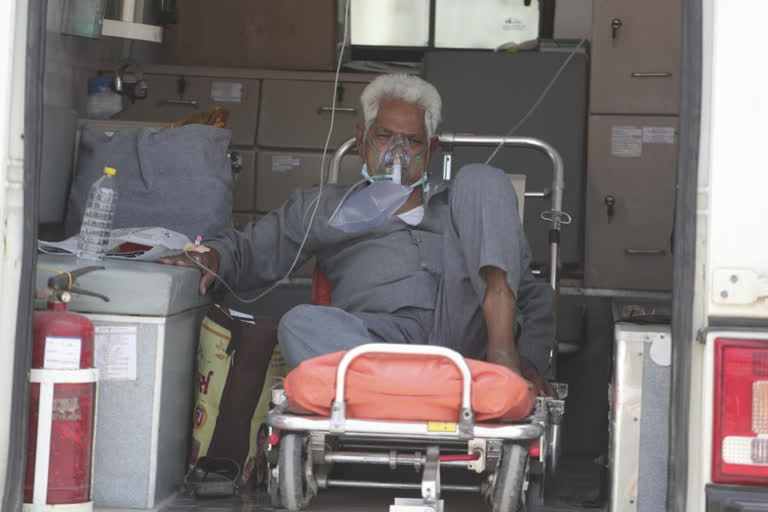New Delhi: Wreaking havoc across the country now, the deadly second wave of COVID 19 pandemic may infect as many as 4 lakh people possibly claiming about 3,000 lives every day when it peaks in mid-May before it ebbs, a very recent study ‘Characterization of the Second Wave of COVID-19 in India’ has forecast.
Using the Susceptible-Infected-Recovered (SIR) model, three professors of IIT Kanpur—Rajesh Ranjan from the Department of Aeronautical Engineering, Aryan Sharma and Mahendra K Verma both from the institute’s Physics department—studied the incidence data between February 27, 2021 and April 17, 2021.
“The scenario is very grim in India where the daily count on April 20, 2021 itself is about triple of the first peak… Preliminary estimates with the SIR model suggest the peak for the second wave to occur in mid-May 2021 with daily count exceeding 0.4 million,” the recently-released study says.
Besides depending on a host of factors, the accuracy of projections by such studies is also dependent on the qualitative and quantitative aspects of data.
Read: Railways, Air Force being deployed to reduce transportation time for oxygen tankers: PM
After the characterization of the second wave, the study employed mathematical and epidemiological models to understand the dynamics.
But what is of concern is the spread of the virus to the rural swath. “Data shows that the second wave has reached the rural area, causing devastation considering poor healthcare infrastructure in these regions,” the study points out.
In India, the first and second waves are separated by about 5 months. The peak of the first wave was in September 2020 with the daily cases of around 1 lakh.
Read: In 24 hours Odisha supplies 250 tonnes oxygen to several states
“The daily cases decreased until mid-February after which it exhibited a sharp increase. The end of the first wave was likely a result of a combination of factors—effective implementation of government interventions, increase in awareness, and, most importantly, the experience gained by medical professionals in treating the disease over the initial months.”
The latest frenetic surge after a relatively long ‘cooling’ time is “baffling”, the study says, although “it may be attributed to a highly infectious double mutant variant of SARS-CoV-2, to the negligent behaviour of the population, and to the relaxation of interventions. The number of daily deaths is also rising recently, but the CFR is low compared to the first wave.”
Case Fatality Rate (CFR) refers to the number of deaths per infection.
“Interestingly, although the second wave shows the virus to be more infectious, the decline in the CFR curve suggests a silver lining of a relatively less fatal mutant. However, considering an exponential increase of cases at a very high rate, it is expected that soon the healthcare facilities will be fully throttled resulting in the unavailability of hospital beds and ventilators to those in critical needs. This may result in an increase in CFR,” the study says.
“The spread of the second wave is much faster than the first wave. Hence, quick and effective administrative intervention is needed to arrest the rapid growth of the epidemic,” it prescribes.
Also Read: RT-PCR test unable to detect new variants: Helvetia Medical Centre



